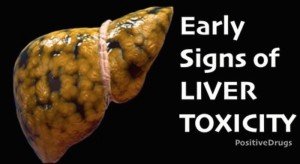
Most people experience some eyelid twitching, medically known as blepharospasm, at some point in their life. This twitching is usually benign, but there are a wide variety of possible causes, from fatigue, to inflammation, to nerve damage. By determining the underlying cause of twitching eyelids, you can figure out how to treat it.
Common Causes of Eyelid Twitching
Most causes of eyelid twitching fall under the category of a minor eyelid twitch. A minor eyelid twitch is caused by an external factor, such as fatigue, lack of sleep, stress, and the use of substances such as alcohol, tobacco, and caffeine. A minor eyelid twitch may disappear soon on its own, but you can improve the chances of it disappearing by reducing or eliminating your intake of alcohol, tobacco, and caffeine; getting enough sleep, and relieving stress in healthy ways.
Many people occasionally suffer from dry eyes. Dry eyes are caused by not having enough tears lubricating the eye. Dry eyes may be red, itchy, have a burning sensation, and may occasionally twitch. Dry eyes can be caused by a number of things such as windy weather, smoking, aging, or underlying eye problems, and can cause tiny abrasions on the surface of the eye if left untreated. Fortunately, dry eyes are very simple to treat with over-the-counter artificial tears, available in drop and ointment form.
Light sensitivity can also occasionally cause an eye twitch. This condition is more common in people with light-colored eyes. Being overly sensitive to light can cause eye pain, headaches, and nausea. If you think you may be sensitive to light, wear wide-brimmed hats and sunglasses that offer UV protection.
Pinkeye, also known as conjunctivitis, is the inflammation of the lining of the eye. Pinkeye can be caused by things like infections, dry eyes, chemicals or fumes, and allergies, and usually goes away on its own after about a week. However, viral or bacterial pinkeye is very contagious, so if you have it, avoid spreading it to others.
RELATED ARTICLE: 7 Things Your Eye Color Reveals About Your Health
Blepharitis is an inflammation of the eyelids. Most cases are caused when the oil glands at the base of the eyelashes become clogged. Blepharitis can cause irritation, redness, crustiness, and other symptoms. Blepharitis can usually be managed with daily gentle eye-washing with warm water. Artificial tears can also help. If your blepharitis isn’t successfully treated at home, see your doctor determine the underlying condition causing your blepharitis and to find treatment options.
When eyelid twitching occurs on its own with no underlying cause, its usually due to a condition caused benign essential blepharospasm. About 2,000 people per year are diagnosed with this condition, and about two-thirds of those people are women. Benign essential blepharospasm usually begins in mid-to-late adulthood, and gets worse over time, leading to increased light sensitivity, facial spasms, and blurry vision. There is no cure for benign essential blepharospasm, but it can be managed with botulinum toxin injections every few months.
More Rare Causes of Eyelid Twitching
A hemifacial spasm is a rare condition that causes the eyelid and mouth muscles to twitch. This is usually caused by an artery pressing against facial nerves. A hemifacial spasm, like benign essential blepharospasm, can be treated with routine botulinum toxin injections.
Amyotrophic lateral sclerosis, also known as Lou Gehrig’s disease, is a neurodegenerative disease that may cause eyelid twitching in the earlier stages. In people with Lou Gehrig’s disease, motor neurons gradually die off, taking away the ability to control muscle movement. About 20,000 Americans have the disease at any given time. Lou Gehrig’s disease is treated with medications and therapies.
Other rare, but possible, causes of eyelid twitching include Bell’s palsy, dystonia, Tourette’s syndrome, and Parkinson’s disease.
When to See a Doctor
If your eyelid twitching doesn’t go away on its own after a week, you should see a doctor about it. If the twitching is so severe that it completely closes the eye, or involves other facial muscles, medical attention is also needed. Redness, discharge, swelling, or a drooping upper eyelid is also signs that you should seek a doctor’s opinion.
For the most part, eyelid twitching is nothing to worry about. However, if it starts to bother you, stay educated about possible causes. See your doctor in the event that there may be a possible underlying condition that needs to be treated.





